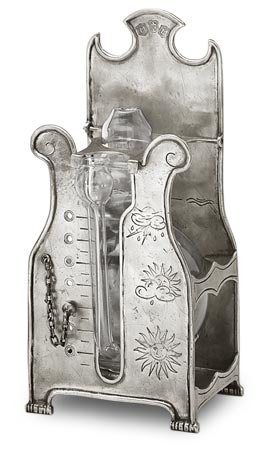-
BORDDEKKING
- Vin & glass
- bartilbehør
- champagnebøtter
- cocktail shaker
- flaskeåpner
- glassbrikker, flaskebrikker
- isbøtter
- kaffeserviser
- kopper, krus
- Melkekanne & fløtekanne
- mugger, karafler
- sukkerskåler
- Tekanner og kaffekanner
- vin og bartilbehør
- vinglass, krus, beger
- vinkjøler
- vinkorker dekorative
- vinsmaker
- Serviser - Bestikk
- bestikk
- boller, skåler, oppsats, stettefat
- dekke tallerkner, asjetter, tinnfat
- servering casserolle
- serveringsbrett
- serveringsfat
- servise sett
- skjærefjøler
- skjeer
- snacks skåler
- suppeterrin
-
GAVER OG INTERIØR
- Den gamle Stil
- askebegere
- bilderammer, rammer
- bjeller
- blekkhus
- bokser, skrin
- bokstøtter
- brettspill
- brevholder
- forstørrelsesglass, papirkniv
- pennholder
- pipe holder
- Small trays for objects
- sparebøsser
- Antikk måleinstrumenter
- barometrer
- bordklokker, veggklokker
- evighetskalender
- gradestokker, termometre
- kompasser
- lommeur stand
- solur
- timeglass
- Interiør belysning
- Lyseslukker
- lysestaker, kubbelysholder, lykter
- oljelamper
- parafinlamper
- vegglysestaker
- ART NOUVEAU
- OM SELSKAPET
- INTERIØRER
In the second half of the 1600s and in the 1700s the use of the water barometer as a means of forecasting weather conditions spread throughout Europe.
Its success was due to the skill of the glassblowers of that age and to the simplicity of the physical principles upon which it is based.
The present-day Torricelli (1608-1647) mercury barometer works on basically the same principle as the water barometer.
The sole difference between these two instruments is that the atmospheric pressure measured by the water barometer is influence by possible environmental temperature ranges.
However, it is surprising to note that in normal use conditions even if the idea upon which it is based is rather simple, thewater barometer is able to measure atmospheric pressure.
INSTRUCTIONS
- Not to hold the glass at the small tube.
1. Pour some water into the glass bulb while holding it in the position shown in picture 1.
2. Fill the bulb until the surface of the water corresponds to the level shown in picture 2.
3. Wait until the temperature of the water is the same as room temperature (this will take about 8 hours).
4. Add or pour out water from the small tube so that the surface of the water corresponds to the reading of weather conditions as that moment (when carrying out this operation, be careful not to touch the higher bulb with your hands so that their heat will not cause the air inside the bulb to expand).
5. Due to evaporation, a teaspoon of water will have to be added every now and then so that the weather conditions at that moment will correspond to the appropriate reading.
6. The stake which is fastened on the chain has the same function as the manual pointers of the needle barometer.

Its success was due to the skill of the glassblowers of that age and to the simplicity of the physical principles upon which it is based.
The present-day Torricelli (1608-1647) mercury barometer works on basically the same principle as the water barometer.
The sole difference between these two instruments is that the atmospheric pressure measured by the water barometer is influence by possible environmental temperature ranges.
However, it is surprising to note that in normal use conditions even if the idea upon which it is based is rather simple, thewater barometer is able to measure atmospheric pressure.
INSTRUCTIONS
- Not to hold the glass at the small tube.
1. Pour some water into the glass bulb while holding it in the position shown in picture 1.
2. Fill the bulb until the surface of the water corresponds to the level shown in picture 2.
3. Wait until the temperature of the water is the same as room temperature (this will take about 8 hours).
4. Add or pour out water from the small tube so that the surface of the water corresponds to the reading of weather conditions as that moment (when carrying out this operation, be careful not to touch the higher bulb with your hands so that their heat will not cause the air inside the bulb to expand).
5. Due to evaporation, a teaspoon of water will have to be added every now and then so that the weather conditions at that moment will correspond to the appropriate reading.
6. The stake which is fastened on the chain has the same function as the manual pointers of the needle barometer.
Eksterne lenker:

Partner, Hotel & Restaurant • Emballasje • Tin wedding: 10th years celebration • Privacy • Withdrawal right • FAQs
![]()
#cositabellini
matchpewter
#코지타벨리니
COSI TABELLINI Via Stretta 44
25128 Brescia Italia
+39 030 2002363
+39 030 2002370
e-mail: info@cositabellini.it
Vat n° IT03342520172
REA n° BS-362311
© 2016 Cosi Tabellini • CT M 95




